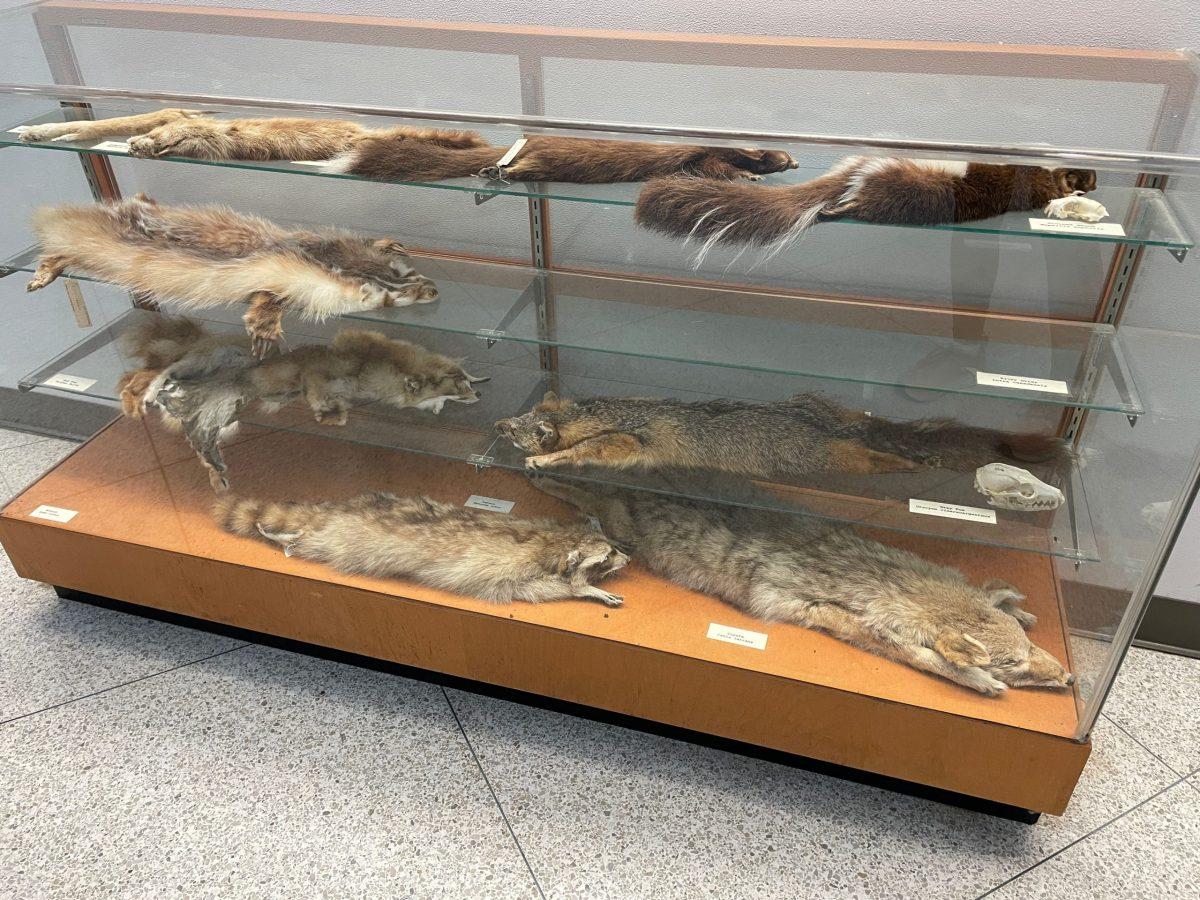In 2017, thousands of plant and animal specimens were relocated from a tiny annex building next to Olin Hall to the Science Connector Building following its construction. These extensive collections hold significance to education and conservation at large, yet not many people realize they’re there.
The Biodiversity Center at Drake University includes both plant and animal collections, including more than 10,000 preserved amphibian, reptile, mammal and bird specimens. Previously, the collection was focused on snakes. However, Dr. Muir Eaton, biology professor and curator of vertebrates, is currently working to expand the bird collection within the center.
Most of the specimens have been collected regionally by Eaton, his students or his colleagues.
“They’re like unique library books, basically, each one,” Eaton said about the birds in the collection. “They have importance that way. I would argue that having just one blue jay isn’t really enough.”
The biodiversity collections are a vast sampling of different species from birds to turtles. The amphibian and reptile collection contains jars of preserved snakes, turtles and frogs, and the mammal collection is full of rodent skins and skulls.
In the past, art students have observed the collections as subjects for their projects, and the collections have also been open to some outside research. Eaton has also lent specimens to the Southeast Polk Environmental Learning Center. It’s all about expanding the collections’ educational impact.
“If I open it up and let the education part be a central aspect of it, then it can get used a lot more, which is good,” Eaton said.
Drake’s collections are mainly used to support coursework, including Eaton’s museum curation class. In this class, open to all majors, students learn to identify bird species and prepare the specimens for the collection.
“I think it’s definitely a unique experience that a lot of Drake students don’t know about or get,” said Katie Krueger, a junior studying sustainability and resilience.
As a museum curation student who contributes to the collections, Krueger has developed a passion for conservation and has much respect for the specimens.
“[The birds] get to have this life after [death] — which I think is really cool — where people get to study them and learn about them,” Krueger said. “Being able to say ‘I did that’ or ‘I was a part of this’ I think is really cool.”
According to Eaton, it is becoming more difficult to collect specimens, as there is an increasing sensitivity to such topics, especially when it comes to killing animals specifically for collections. However, he says that the population of collections does not have much effect on the populations of these species at large.
“If there is an animal that is in such critical population status that collecting a few individuals would be detrimental, that thing’s probably going extinct. So, maybe getting them in a museum is a good move,” Eaton said.
Many instances of natural mortality contribute to collecting specimens — namely habitat loss, especially for birds. Eaton said that is what makes these collections so important: They serve as a permanent record of these animals and display the variations within each species.
“They give us a glimpse of species distributions and ranges. They also represent potentially unknown scientific material. 30 years ago, no one would have probably thought that you’d be able to start sequencing the DNA out of these things,” Eaton said.
Conservation research relies on biodiversity collections from all over the world. For example, there is a lot to learn from the patterns within different species, according to Ava Sendelbach, a first-year who assists in maintaining Drake’s collections.
“It’s super cool and important to look at conservation of the species and see how it’s changed and how it’s adapting to its current environment,” Sendelbach said.
Sendelbach described a project she worked on at the Chicago Field Museum that studied how pollution affected various bird species’ coloring in the city. By comparing new specimens to those of the same species from the 1800s, it became more evident how the species has evolved over time. The colors of the birds’ feathers are increasingly dull compared to their ancestors.
Biodiversity collections across the country advance conservation and species variation research. According to Eaton, they are the foundation of evolutionary information and contribute to lasting studies on a wide variety of species.
“They’ve become instrumental in conservation,” Eaton said about the collections. “Who knows what other future kind of resources they might provide?”
Drake houses these extensive collections right on campus, allowing students to gain first-hand experiences and have unique learning opportunities in the field of biology and conservation while also contributing to long-lasting research.







